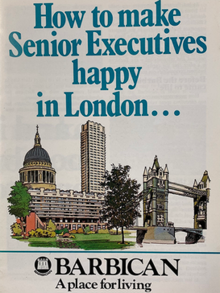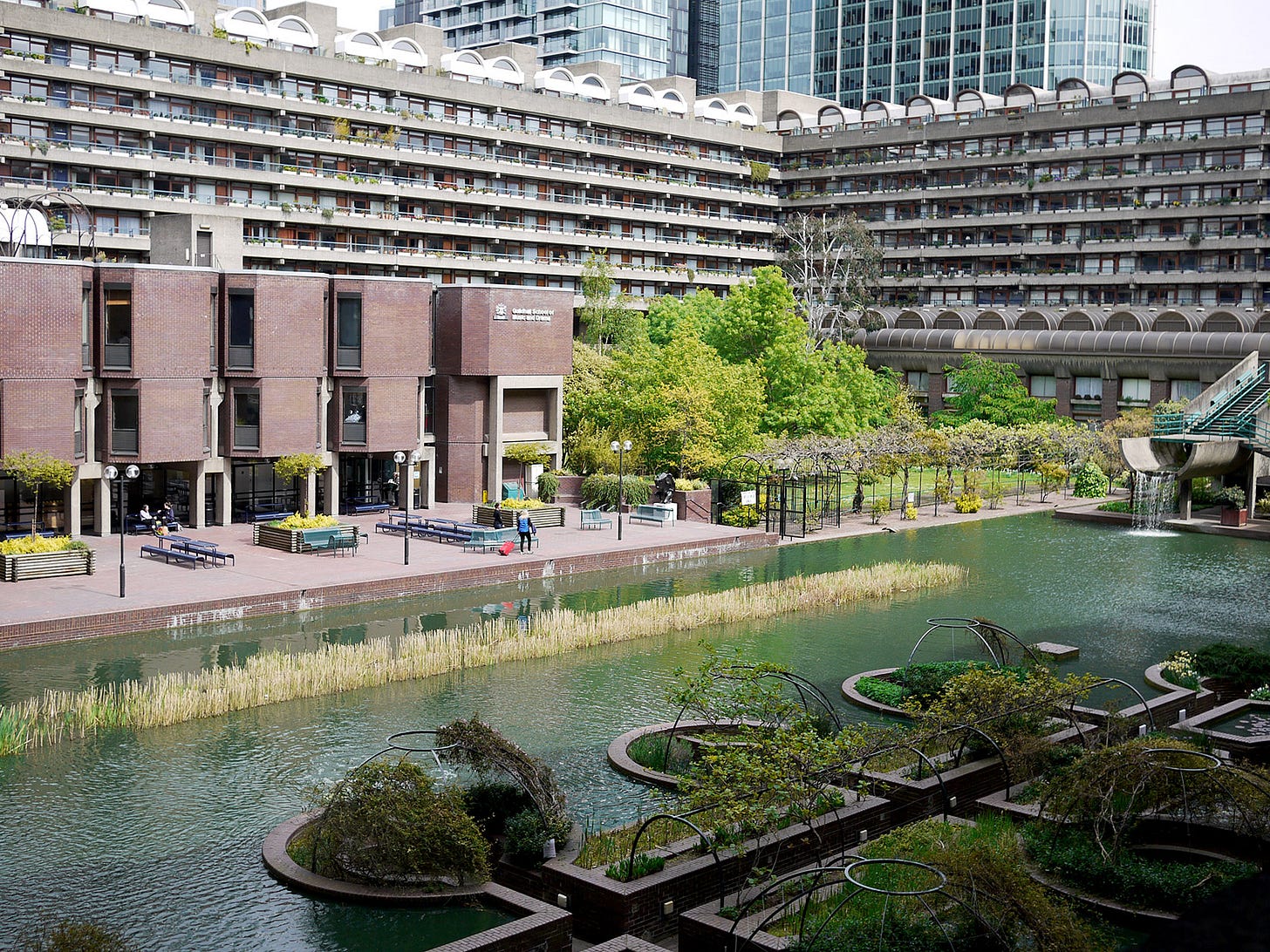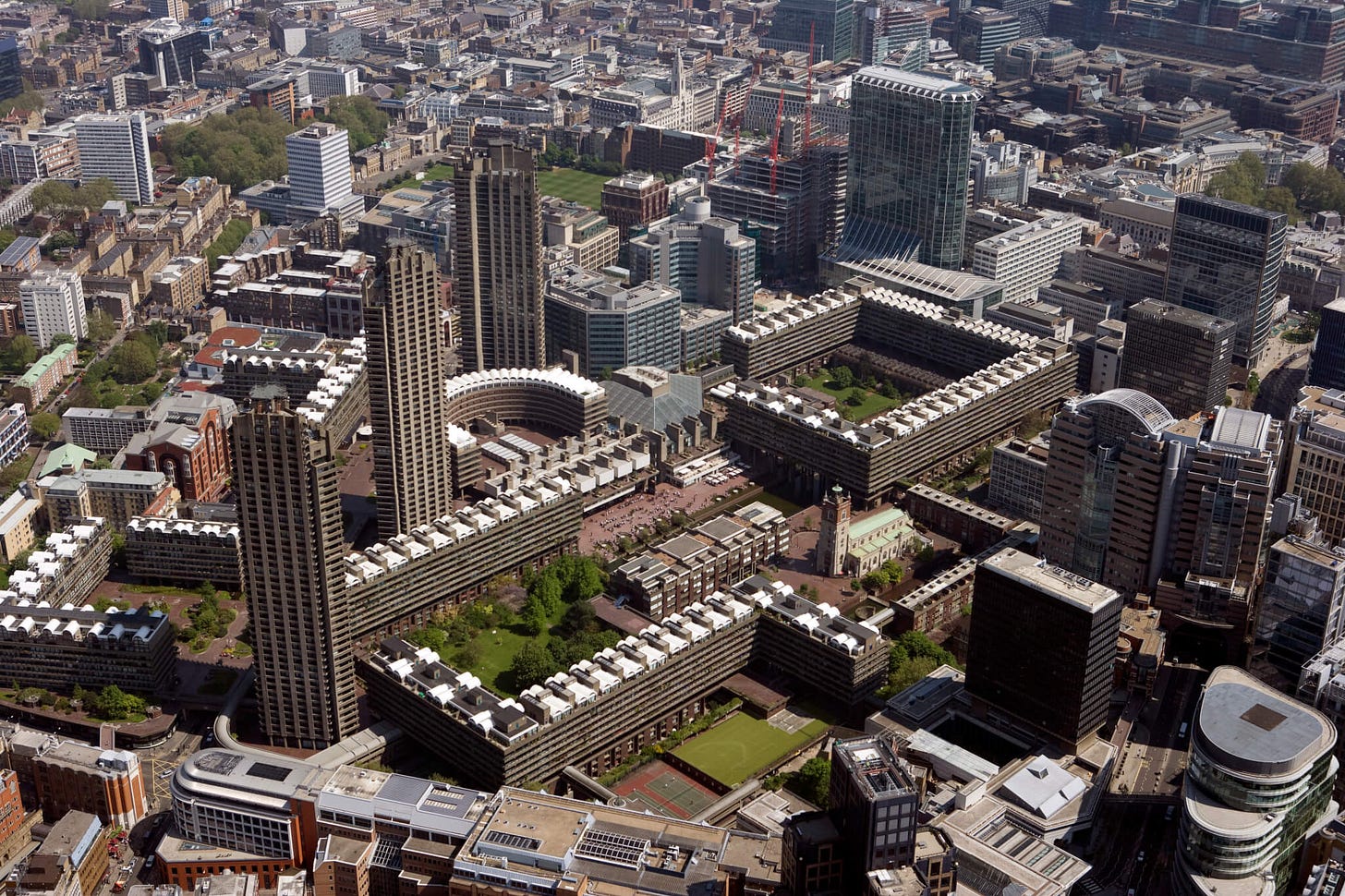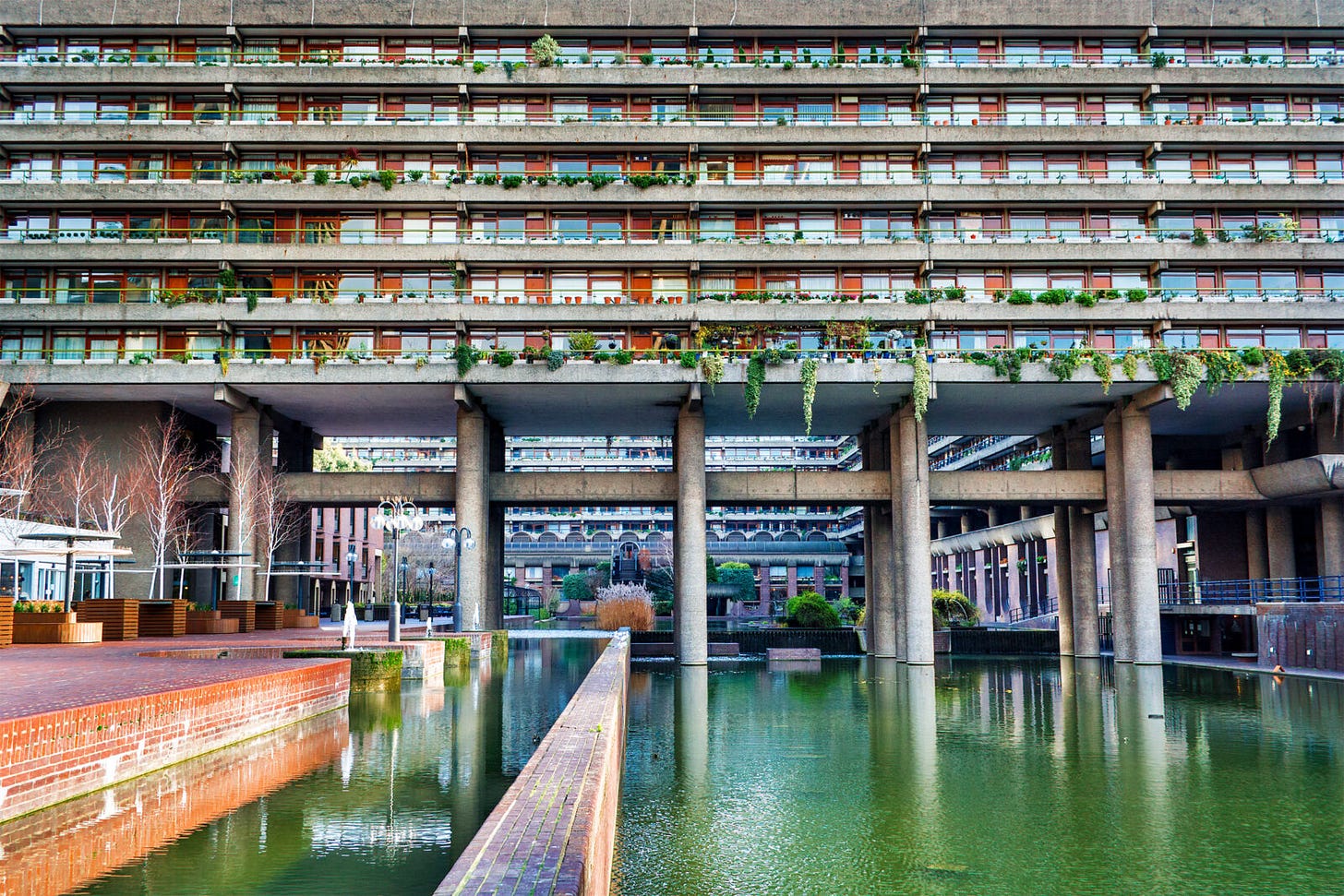Have you ever visited a place for the first time and immediately felt like you’ve been there before? That you belong there? A place where you feel the energy of it all but you don’t quite know what it means?
For me, one of these places is the Barbican Estate in Central London.
My fascination has led me down somewhat of a rabbit hole. Who made this beautiful, brutalist kingdom? Why did they put a lake in the middle of it? And is this what they thought the future would look like?
I like the Barbican because…well, I don’t know why I like the Barbican, I just know that I like the Barbican. My best attempt at understanding my fascination with the Barbican is that it’s both extraordinary and completely normal all at once.
Originally created as a rental estate for upper-middle-class Londoners in 1965, it now consists of over 2,000 privately owned dwellings, and even has a rooftop tennis court, a library, a concert hall, and a few restaurants. The name of the Barbican was derived from the Latin 'Barbecana' (a fortified outpost or gateway: an outer defense of a city or castle or any tower situated over a gate or bridge that was used for defense purposes). Looking at pictures of the Estate, this starts to make a lot of sense.
Like all good things in England, the different “Houses” that make up the complex are named after a long list of historical figures including every high schooler’s least favorite person, Shakespeare. There are time capsules (!) that were cemented into the foundation of the Barbican by one of the engineers who worked on it, to be retrieved on its 40th anniversary, which ultimately failed because they were “buried too deep”. The early designs of the complex included its own gas station, because, why not? The complex is even home to an original piece of Banksy street art (as if it couldn’t get any cooler).
When I lived in the city, I’d go visit frequently for no good reason. It feels like a real community, in a kind of way that only sections of a big city like New York City or London can offer. At the same time, it feels like every other London council estate. It looks the same, but it feels different. Or maybe it looks different, and feels the same?
It’s the type of place where, if I were a betting man, I would wager that the small flats looking inwards at the occasionally bustling courtyard below are inhabited by writers, professors, artists, and scholars. I suspect there are at least a few Eames Lounge Chairs on the premises. The type of place that likely has a higher than average number of books per household.
In an attempt to convey my feelings towards this place, I’ll leave you with this: the beauty of the Barbican is in the stark contrast between what someone thought the future would bring, versus what we ended up with. I’ve never seen such a strong real-life example of the future being altered. The Barbican is a well-made but horribly inaccurate sci-fi movie, in brick form.
Am I the only one that feels so deeply about this very normal place? Where are all of the Barbican lovers? Do they live there? One day, if my financial situation permits, I will buy a flat in the Barbican Estate and visit occasionally for intellectual and nostalgic purposes.







